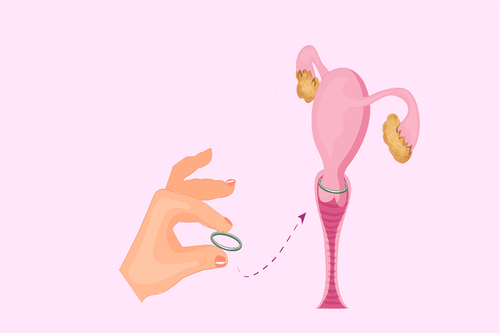This is an automatically translated article.
This article was professionally consulted with Specialist Doctor I Truong Nghia Binh - Obstetrician - Gynecology Department - Vinmec Da Nang International General Hospital.Menorrhagia is a health problem that is not uncommon in women. Menorrhagia can be a manifestation of a common endocrine disorder or a warning sign of many dangerous diseases such as uterine polyps, uterine fibroids, inherited blood clotting disorders,...
1. Menorrhagia is what disease?
A normal cycle has an average menstrual period of 3-5 days. Menorrhagia is a state of heavy menstrual bleeding, abnormally long menstrual periods (over 7 days) and blood loss of more than 80ml/cycle (while normal women only lose about 50-80ml of blood/cycle). period).Symptoms of menorrhagia include:
Heavy bleeding during menstruation, continuously for more than 7 days, women have to change tampons every hour because of bleeding and continue for many hours. Abnormally heavy bleeding in 2 consecutive menstrual periods. Menstruation is heavy at night. Menstrual blood clots into large clots. Or lower abdominal pain. Fatigue, shortness of breath, symptoms of anemia if menorrhagia and hypermenorrhea persist.

2. Menorrhagia is a warning sign of what disease?
2.1 Hormonal disorders
The main cause of menorrhagia is due to hormonal disorders in women. Every month, the sex hormones estrogen and progesterone will act to thicken the endometrium. When no sperm fuses with the egg to implant in the uterus, this endometrium sheds and causes menstruation. If the two sex hormones are out of balance, the endometrium is too thick, which will lead to heavy bleeding during menstruation - menorrhagia.Menorrhagia is most common in the early and late stages of the reproductive period – ie puberty and perimenopause in women. In addition, in the reproductive age, women can also have menorrhagia at the time of giving birth, taking abortion pills or taking birth control pills.
2.2 Signs of many other diseases
Heavy and prolonged menstruation is also a manifestation of a number of pathological lesions in the uterus such as uterine polyps, uterine fibroids, endometritis, miscarriage, ectopic pregnancy, uterine cancer. uterus, cervical cancer, ovarian cancer,...In addition, women who have health problems such as inherited blood clotting disorders, hypothyroidism, diabetes, chronic hepatitis , chronic heart or kidney disease, lupus erythematosus, ... are also prone to heavy menstrual bleeding.
In particular, menorrhagia is concentrated in women who are obese, have given birth many times, smoke, are using an IUD or are being treated with steroid-containing anti-inflammatory drugs,...

3. How to diagnose menorrhagia?
The medical techniques used to diagnose menorrhagia are:Diagnosis is based on history, physical examination, and blood tests to check for anemia. Anemia occurs when a woman loses too much blood during a prolonged menstrual period. Supersonic. Pap's test: the doctor takes a small sample of cells from the surface of the cervix to check for any abnormalities. Endometrial biopsy, dilation of the uterus: take a sample of endometrial tissue to check for cancer if it is suspected that the cause of menorrhagia is cancer in the uterus. Laparoscopy: to look at the organs in the abdomen through a small incision. Hysterosalpingogram: A contrast material is inserted into the uterus and fallopian tubes to take pictures and the doctor will see the uterus on X-rays. Hysteroscopy: Using a metal tube with a camera attached to it, it is passed through the cervix to the uterus for observation. The condition of menorrhagia occurs in each person is different, the cause of the disease is not the same, so the treatment will also be applied depending on each specific case. Therefore, when suspecting that they have menorrhagia, the patient should go to a specialized medical facility to be examined, accurately determine the cause of the disease and have appropriate treatment, to avoid long-term adverse effects on the body. health and fertility.
Please dial HOTLINE for more information or register for an appointment HERE. Download MyVinmec app to make appointments faster and to manage your bookings easily.














